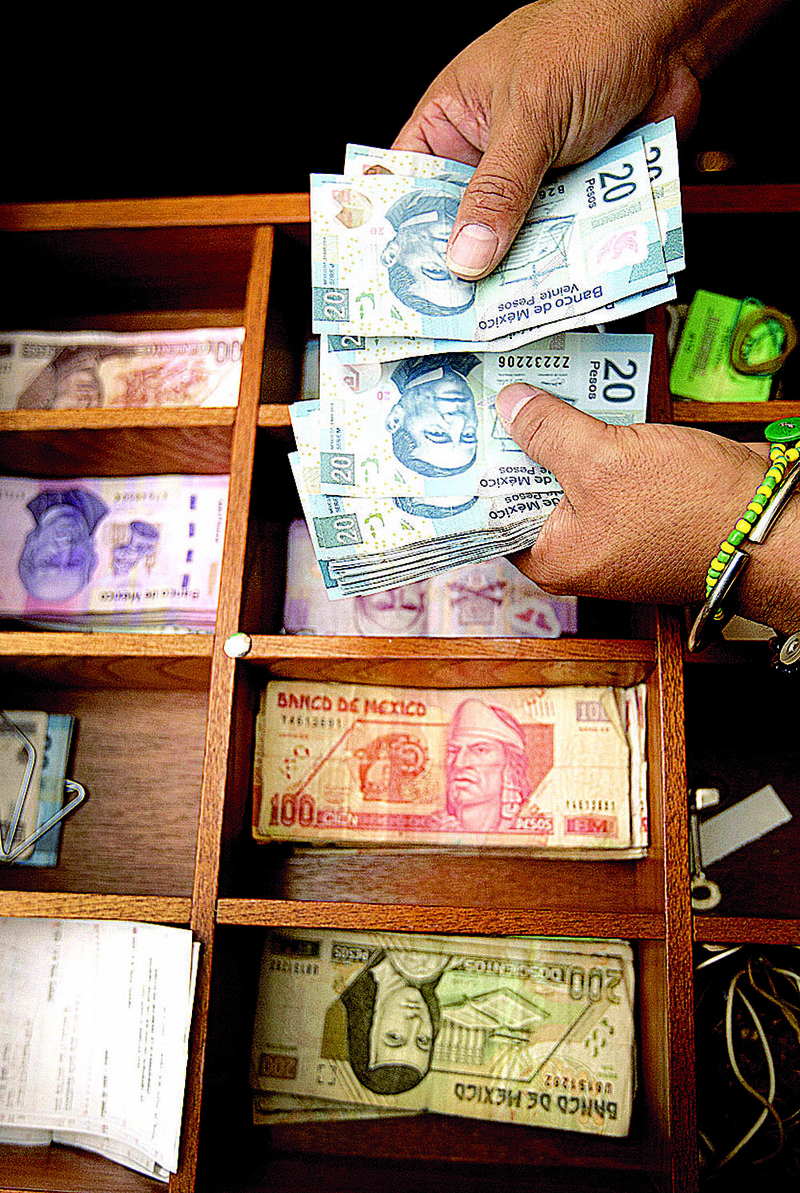MEXICO CITY — Mexico’s peso has turned from the world’s strongest major currency into the weakest of the past month amid growing investor concerns that the economy will slow as demand diminishes from its biggest trading partner, the United States.
After strengthening 12 percent against the dollar since the end of May, the peso has weakened more than 2 percent, the biggest decline among the 16 most-traded currencies, according to data compiled by Bloomberg.
X-Trade Brokers’ Dom Maklerski said the peso it will depreciate 3.7 percent more by September. Futures traders are cutting bullish bets at the fastest rate since June.
The peso is vulnerable because Mexico, which depends on the U.S. for 80 percent of its exports, will expand 3.6 percent next year, the least since the 2009 recession, as President-elect Enrique Pena Nieto takes office, according to the median figure of 23 economist estimates compiled by Bloomberg. The past month’s losses surprised investors who bought Mexican assets to take advantage of the nation’s higher interest rates at a time when the Federal Reserve was debasing the dollar.
“The peso is really a very good indicator of the risk-on, risk-off mood that markets have been displaying lately,” Guillermo Ortiz, the chairman of Grupo Financiero Banorte and Mexico’s former central-bank governor, said in an interview last week in Mexico City. “All the uncertainties regarding the world economy, the fiscal outlook and so on and so forth, determine the appetite of investors.”
For much of this year, the peso advanced as international investors increased holdings of Mexico’s local fixed-rate bonds to a record $73 billion last month, or 52 percent of those outstanding, from 43 percent at the end of 2011, according to the central bank. While the Fed, the European Central Bank and the Bank of Japan have cut rates to near zero or bought bonds since July 2009 to spur economic growth, Mexico central-bank Governor Agustin Carstens has kept borrowing costs at 4.5 percent, the only Groupof-20 nation to stand pat in that period.
Now the currency is weakening as President Barack Obama negotiates with Congress to avoid more than $600 billion in mandated spending cuts and tax increases starting Jan. 1. The so-called fiscal cliff could drive the U.S. back into recession, according to the Congressional Budget Office.
The Scotia company recommended on Nov. 5 that its clients sell the peso, citing “somewhat crowded positioning” and “uncertainty” over U.S. debt talks and global growth. Morgan Stanley advises using options to buy insurance against a “deeper” sell off. X-Trade predicts it will decline to 13.71 per dollar by the end of September, from 13.2003 last week.
The peso weakened 1.2percent last week against the dollar, the most since June. The currency decline handed an investor in Mexican bonds a 3 percent loss in dollar terms over the past month,according to data compiled by Bank of America.
The currency is moving against the consensus expectations of Wall Street strategists. The median estimate of more than 25 analysts surveyed by Bloomberg shows the peso will strengthen to 12.8 per dollar by Dec. 31 and to 12.4 by the end of 2013. JPMorgan Chase & Co. sees it at 11.9 by September.
Carstens of the Mexican central bank signaled last week that a stronger peso would help curb inflation, which reached 4.77 percent in September, the fastest rate since March 2010. Mexico’s currency has “solid grounds” to advance, he said in a Nov. 5 interview in Mexico City after the conclusion of G-20 meetings. Two days later, he said the “greatest concern” is that persistently “elevated” inflation would become more entrenched.
Economists predict the central bank won’t reduce benchmark interest rates in the next year, according to the median forecast compiled by Bloomberg.
“We like the fundamentals of Mexico and the peso is still attractively priced,” said Thomas Kressin, a senior vice-president and head of European foreign-exchange in Munich at Pacific Investment Management Co. The firm, which oversees $1.9 trillion from its base in Newport Beach, Calif., is betting the peso will rise against the dollar and the euro.
Information for this article was contributed by Eric Martin, Nacha Cattan and Kristine Aquino of Bloomberg News.
Business, Pages 21 on 11/13/2012

